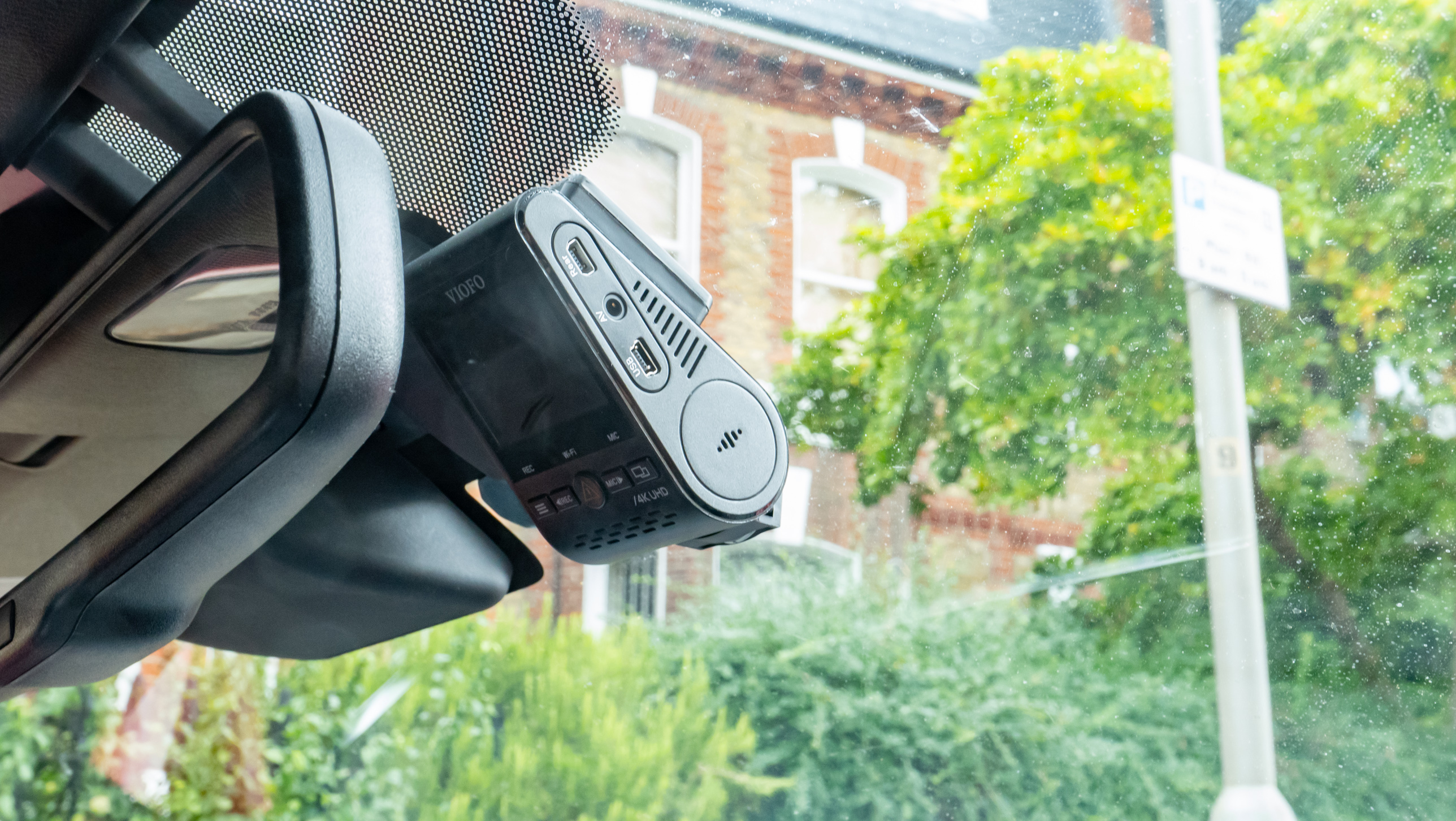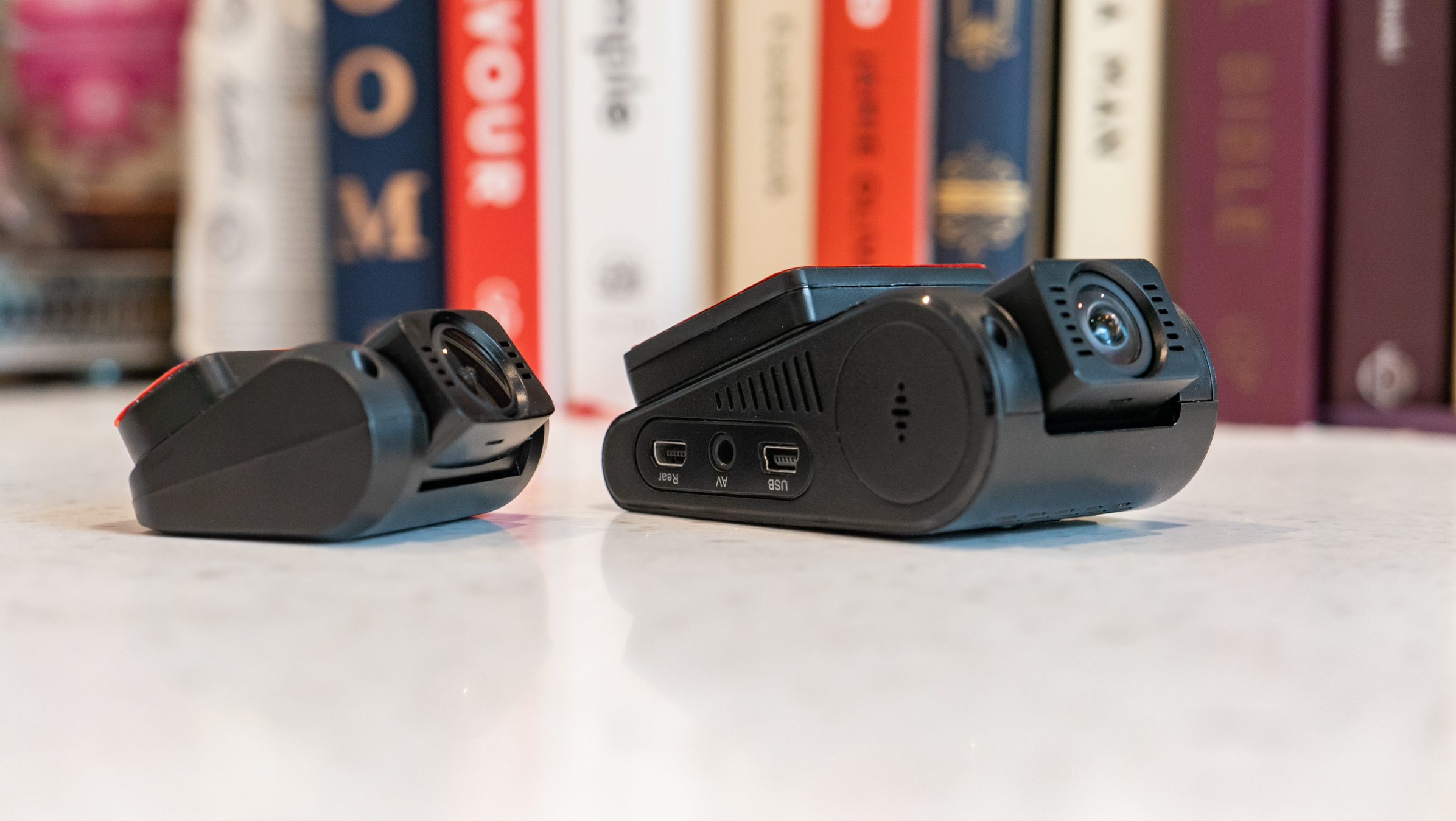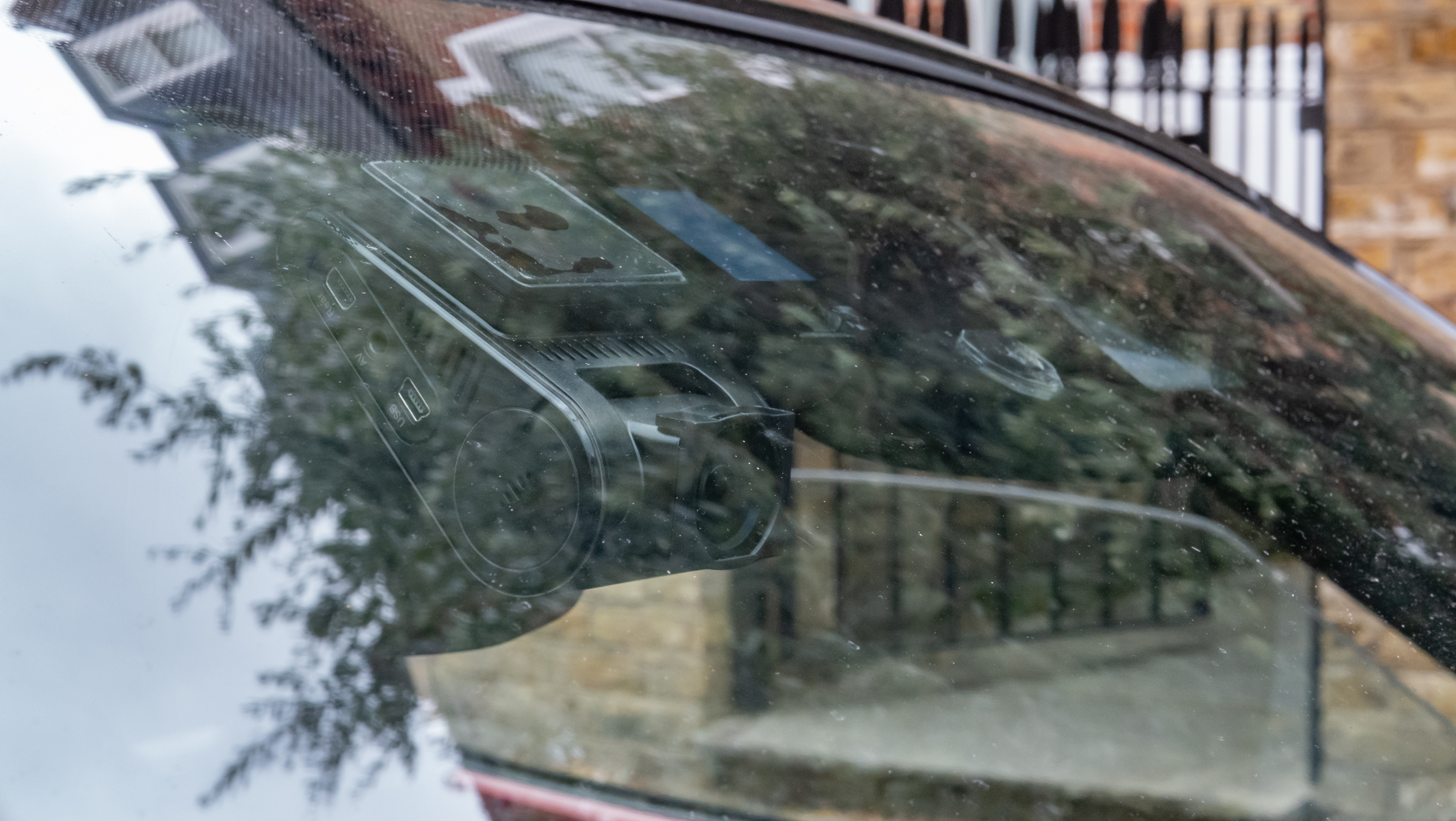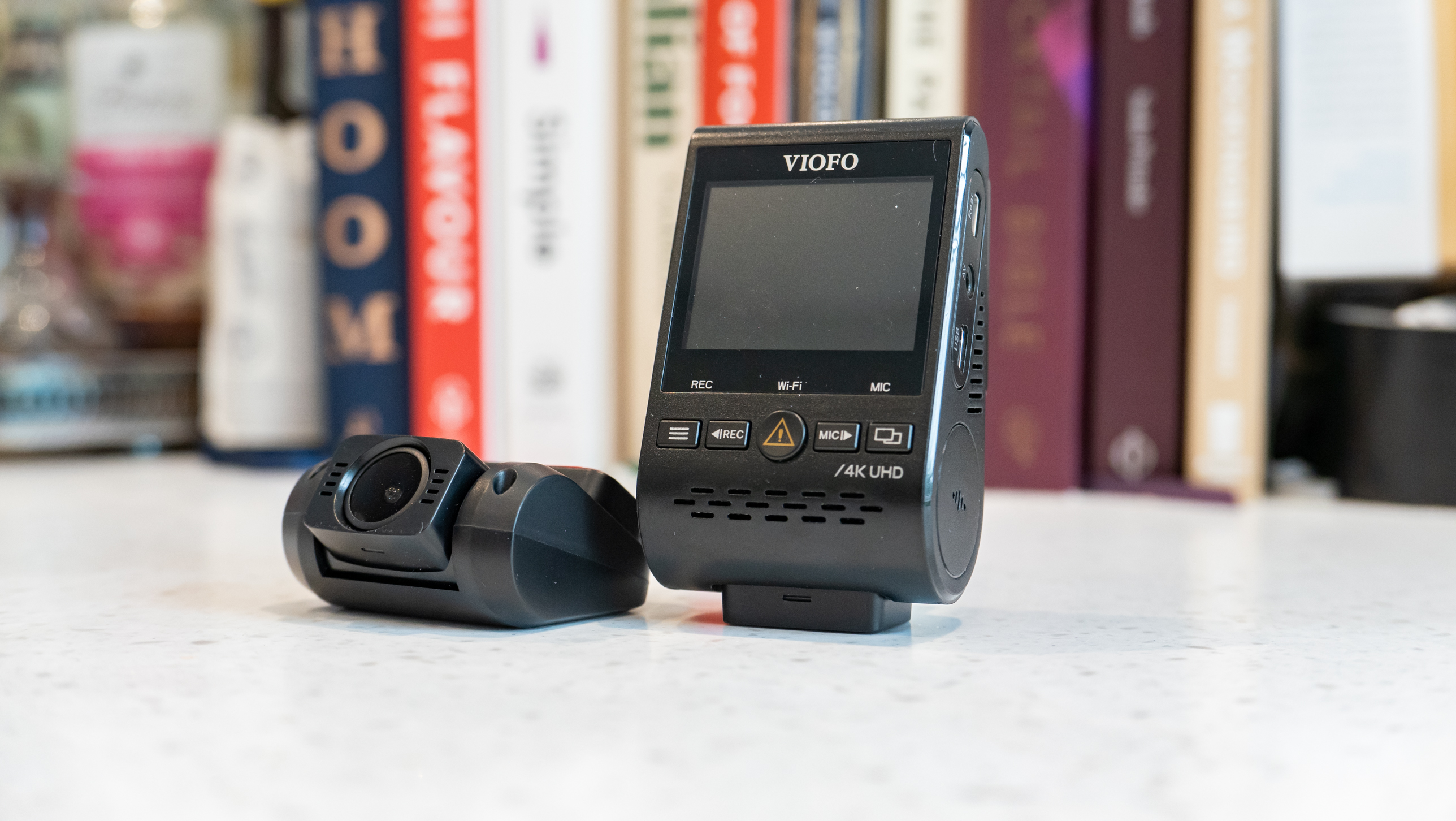TechRadar Verdict
It might not be the most recognizable name, or the most attractive dash cam, but the Viofo A129 Pro Duo records excellent 4K video, includes a second camera that shoots in Full HD and isn’t bogged down with driver assistance features or voice control. The lackluster hardware is evidence of a manufacturer working hard to drive down the price, but that can mostly be overlooked thanks to pin-sharp 4K footage.
Pros
- +
4K sensor and Ultra HD video recording
- +
Dual-camera system at a decent price
- +
Includes GPS
Cons
- -
Unattractive design
- -
Lenses fairly narrow at 140 degrees
- -
4K video files are huge
Why you can trust TechRadar
As the ‘Duo’ in its name suggests, the Viofo A129 Pro Duo is a two-camera dash cam system. The front has a 4K sensor for recording video at Ultra HD resolution while the rear is limited to 1080p Full HD – both record at 30 frames per second.
This kit also includes a GPS module. It’s fairly chunky but attaches neatly to the front-facing camera and adds precise speed and location data to video recordings. Also in the box is a tool for tucking the cables neatly behind the interior panels of your car, several adhesive clips for running a cable along the windscreen, and a 12V power adapter with two USB ports (for charging your phone and powering the dash cam simultaneously).
The Viofo A129 Pro Duo was first launched in October 2019 and is available to buy now, with a January 2023 list price of £187.67 / $224.99 / AU$ 333.67.
On top of all this, our review kit provided by Viofo also included the optional polarizing lens cover (£11.25 / $13.49 / AU$20.01) to help improve the front-facing camera’s video quality, and a Bluetooth remote button (£14.99 / $17.99 / AU$26.69), which provides a convenient way to record footage without taking your eyes off the road.
The Viofo is well-priced considering it’s a dual-camera system and also records the front-facing view in 4K. But while it stands up well on a technical level, and we’ll delve into the performance more later, the look and feel is a reminder of its more accessible price tag. It’s a clunky, cheap-feeling dash cam that lacks the sense of quality offered by those from Garmin, Thinkware, and Nextbase. The plastics are scratchy, the cables are frustratingly thick, and the overall aesthetic feels like a tech product from a decade ago – only one with modern, 4K internals.

Moving on from the so-so hardware, the software also lacks polish, with a slightly confusing button design where the Rec and Mic buttons also perform the role of scrolling up and down through the menu system. A jarring beep that sounds with every button press can thankfully be switched off, and the Settings menu can also be accessed via a Wi-Fi connection with the Viofo app. We like how this app works without demanding you create a user account, and despite a lot of poor reviews on the Apple App Store, we found it worked fine, although in the clunky way common among most dash cam apps.
The setup experience could be slicker, but dash cams are mostly set-it-and-forget-it devices, quietly getting on with their job without much interaction. There are more settings here than with most other dash cams, and we wonder if some buyers might be confused by the need to select a preferred bitrate and video frequency. We’d rather the dash cam worked that out for itself, but can see the extra configurability appealing to some buyers.

Both cameras attach to your vehicle’s windscreen with adhesive pads. he front camera can be removed from this pad (which is attached to the GPS module) by sliding it to the side. It’s a quick and easy way to remove the Viofo from your car, but it’s just as easy to pop out the microSD card (not included) or connect to the phone app via Wi-Fi when you want to transfer footage.
We were pleasantly surprised by the video quality produced by the Viofo A129 Pro Duo and its Sony Exmor R sensor. The front camera was especially impressive. The 4K resolution is doing a lot of the heavy lifting here, allowing for more detail and a crisper image than would be possible with a Full HD resolution. But it’s impressive nonetheless, with key details like road signs and vehicle registration plates easy to identify. Saturation is quite high, but since this is footage intended to defend yourself after an incident – not to share on YouTube or Instagram – this isn’t a concern.

Although video quality is higher than 1080p dash cams, there’s still a lingering doubt as to whether 4K recordings are truly worth it, at least from a practical perspective. Each one-minute recording created by the Viofo is approximately 300MB, so your microSD card will fill up quickly, and transferring then viewing footage can be a cumbersome process.
The rear camera is limited to Full HD, so naturally doesn’t produce as impressive footage, but it’s still perfectly adequate. However, the 140-degree viewing angle for both cameras could be higher, especially at the front where we’d like to have seen 160 or even 180 degrees to match some of the Viofo’s rivals.

Helpfully, footage automatically saved when a collision is detected by the G-sensor is put in a different folder. That way, when viewing it back on your computer or tablet it’s easy to find the right file – handy, given that Viofo’s naming convention smashes the date and time, to the second, into a barely-comprehensible file name.
A parking mode is available, but this requires a hard-wiring kit sold separately. As with other dash cams, this gives the A129 a permanent power source, allowing it to sense collisions while parked and record potentially crucial evidence of what happened. As ever, we’d recommend hiring a professional to install the hard-wiring kit. And on that note, the Viofo’s rather thick USB cables make it harder to install discreetly than other dash cams on the market.

Should you buy the Viofo A129 Pro Duo?
Buy it if…
You want 4K footage at a decent price
The Viofo A129 Pro Duo is well-priced for a 4K, dual-channel dash cam. We were particularly impressed by the quality of the front-facing module, and there are plenty of lesser resolutions (with higher frame rates) to pick from if 4K isn’t for you.
You need GPS
We were pleased to see Viofo include a GPS module in the box of this kit, and the way it connects to the main unit is nice and discreet. This connection also makes it easy to disconnect the camera while leaving the adhesive windscreen mount in place.
You value performance over aesthetics
With its cheap-feeling plastics and rudimentary hardware, the Viofo won’t be winning many design awards. But that shouldn’t matter, because if you need a 4K dash cam, with an HD rear camera and on a fairly tight budget, the A129 makes a compelling argument for itself.
Don’t buy it if…
You have a larger budget
If you can spend more money, there are plenty of options that include 4K resolution and a secondary rear camera. And, crucially, these products by Garmin and Nextbase look and feel better than the Viofo, which feels a bit like a product designed a decade ago.
You need a wide-angle view of the road
At 140 degrees for both its front- and rear-facing lenses, the Viofo’s field of view is less than we’d like it to be. Some other dash cams, like those from Garmin, now shoot at 180 degrees, ensuring a view to the sides of your car as well as ahead.
You want a lot of extra features
The jury’s still out on whether dash cams really need to be packed with driver assistance systems. But if you want one that warns about speed cameras and issues forward-collision warnings, you’ll need to look elsewhere, as those (along with voice control) are not part of the A129’s feature set.
See where the Viofo A129 Pro Duo sits in our best dash cams round up.
First reviewed in October 2022
Alistair Charlton is based in London and has worked as a freelance technology and automotive journalist for over a decade. A lifelong tech enthusiast, Alistair has written extensively about dash cams and robotic vacuum cleaners for TechRadar, among other products. As well as TechRadar, he also writes for Wired, T3, Forbes, The Independent, Digital Camera World and Grand Designs Magazine, among others.
